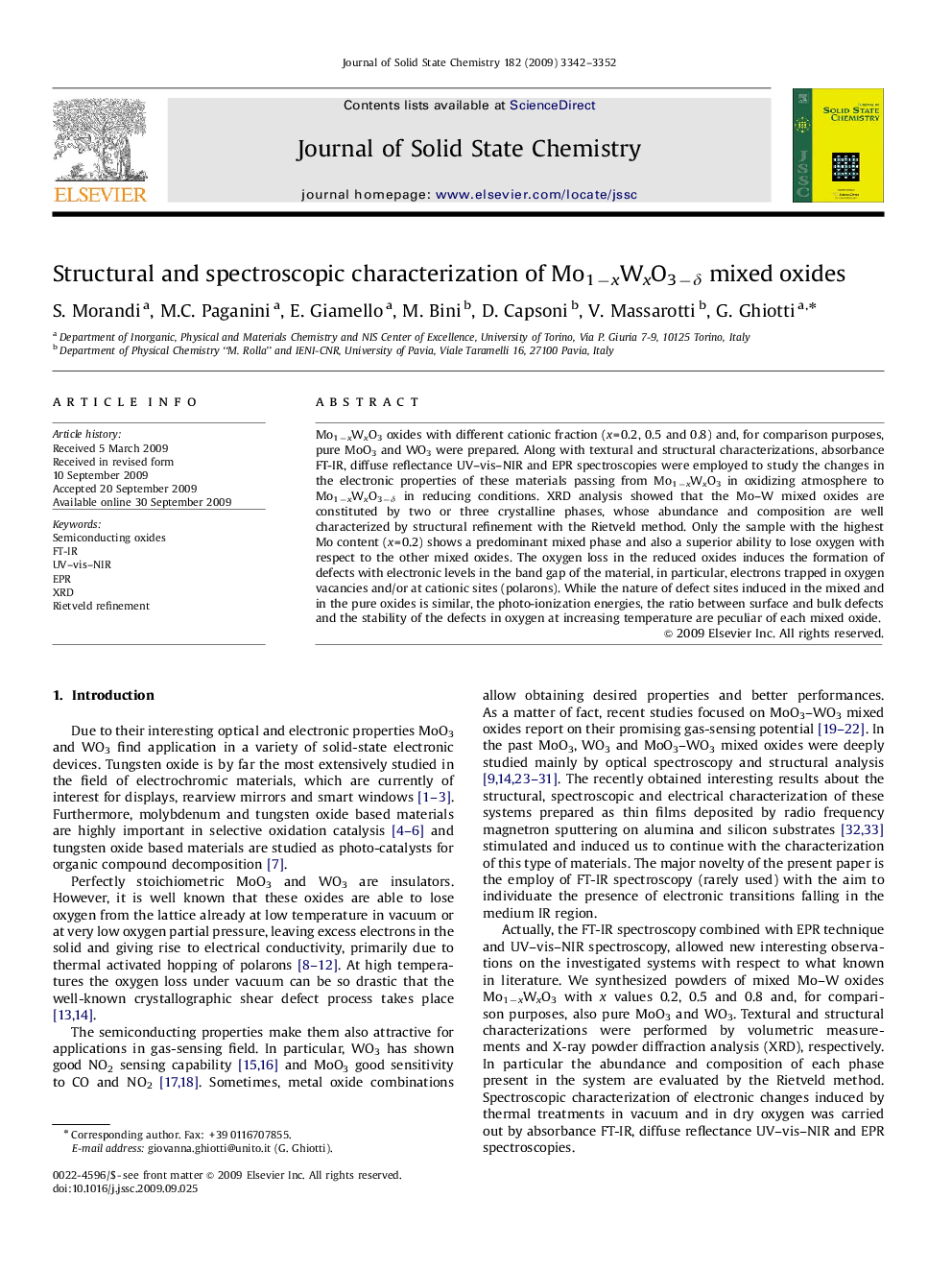| Article ID | Journal | Published Year | Pages | File Type |
|---|---|---|---|---|
| 1333579 | Journal of Solid State Chemistry | 2009 | 11 Pages |
Mo1−xWxO3 oxides with different cationic fraction (x=0.2, 0.5 and 0.8) and, for comparison purposes, pure MoO3 and WO3 were prepared. Along with textural and structural characterizations, absorbance FT-IR, diffuse reflectance UV–vis–NIR and EPR spectroscopies were employed to study the changes in the electronic properties of these materials passing from Mo1−xWxO3 in oxidizing atmosphere to Mo1−xWxO3−δ in reducing conditions. XRD analysis showed that the Mo–W mixed oxides are constituted by two or three crystalline phases, whose abundance and composition are well characterized by structural refinement with the Rietveld method. Only the sample with the highest Mo content (x=0.2) shows a predominant mixed phase and also a superior ability to lose oxygen with respect to the other mixed oxides. The oxygen loss in the reduced oxides induces the formation of defects with electronic levels in the band gap of the material, in particular, electrons trapped in oxygen vacancies and/or at cationic sites (polarons). While the nature of defect sites induced in the mixed and in the pure oxides is similar, the photo-ionization energies, the ratio between surface and bulk defects and the stability of the defects in oxygen at increasing temperature are peculiar of each mixed oxide.
Graphical abstractThe combined use of different techniques provides new insight into structural, optical and electronic properties of semiconductor Mo1−xWxO3−δ mixed oxides.Figure optionsDownload full-size imageDownload as PowerPoint slide
